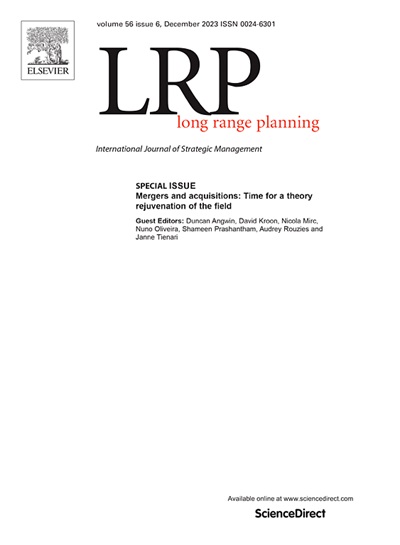Time and MNE strategy: Managing temporal misalignments in global value chains
IF 6.3
2区 管理学
Q1 BUSINESS
引用次数: 0
Abstract
Multinational enterprises (MNEs) operate in a complex environment characterized by the interplay of macro factors from the external environment and firm-specific micro factors. Both sets of factors have important temporal elements, specifically industry clock speed at the macro level and firm activity duration at the micro level. We argue that the temporal alignment of these factors has a crucial effect on firm performance. We explore the theoretical foundations of this phenomenon and propose the concept of temporal coupling as a mechanism for resolving temporal misalignments. Temporal coupling is defined as the ability of an MNE to effectively synchronize its internal processes with external temporal rhythms. The effective implementation of temporal coupling is a higher-order adaptive capability that provides competitive advantage in global value chain organization.
时间与跨国公司战略:管理全球价值链中的时间错位
跨国企业(MNEs)在一个复杂的环境中经营,其特点是外部环境的宏观因素和企业自身的微观因素相互作用。这两组因素都有重要的时间因素,特别是宏观层面的行业时钟速度和微观层面的企业活动持续时间。我们认为,这些因素的时间一致性对企业绩效有至关重要的影响。我们探讨了这一现象的理论基础,并提出了时间耦合的概念,作为解决时间失调的机制。时间耦合被定义为跨国公司有效地将其内部过程与外部时间节奏同步的能力。时间耦合的有效实施是在全球价值链组织中提供竞争优势的一种高阶适应能力。
本文章由计算机程序翻译,如有差异,请以英文原文为准。
求助全文
约1分钟内获得全文
求助全文
来源期刊

Long Range Planning
Multiple-
CiteScore
13.00
自引率
7.10%
发文量
75
期刊介绍:
Long Range Planning (LRP) is an internationally renowned journal specializing in the field of strategic management. Since its establishment in 1968, the journal has consistently published original research, garnering a strong reputation among academics. LRP actively encourages the submission of articles that involve empirical research and theoretical perspectives, including studies that provide critical assessments and analysis of the current state of knowledge in crucial strategic areas. The primary user base of LRP primarily comprises individuals from academic backgrounds, with the journal playing a dual role within this community. Firstly, it serves as a platform for the dissemination of research findings among academic researchers. Secondly, it serves as a channel for the transmission of ideas that can be effectively utilized in educational settings. The articles published in LRP cater to a diverse audience, including practicing managers and students in professional programs. While some articles may focus on practical applications, others may primarily target academic researchers. LRP adopts an inclusive approach to empirical research, accepting studies that draw on various methodologies such as primary survey data, archival data, case studies, and recognized approaches to data collection.
 求助内容:
求助内容: 应助结果提醒方式:
应助结果提醒方式:


